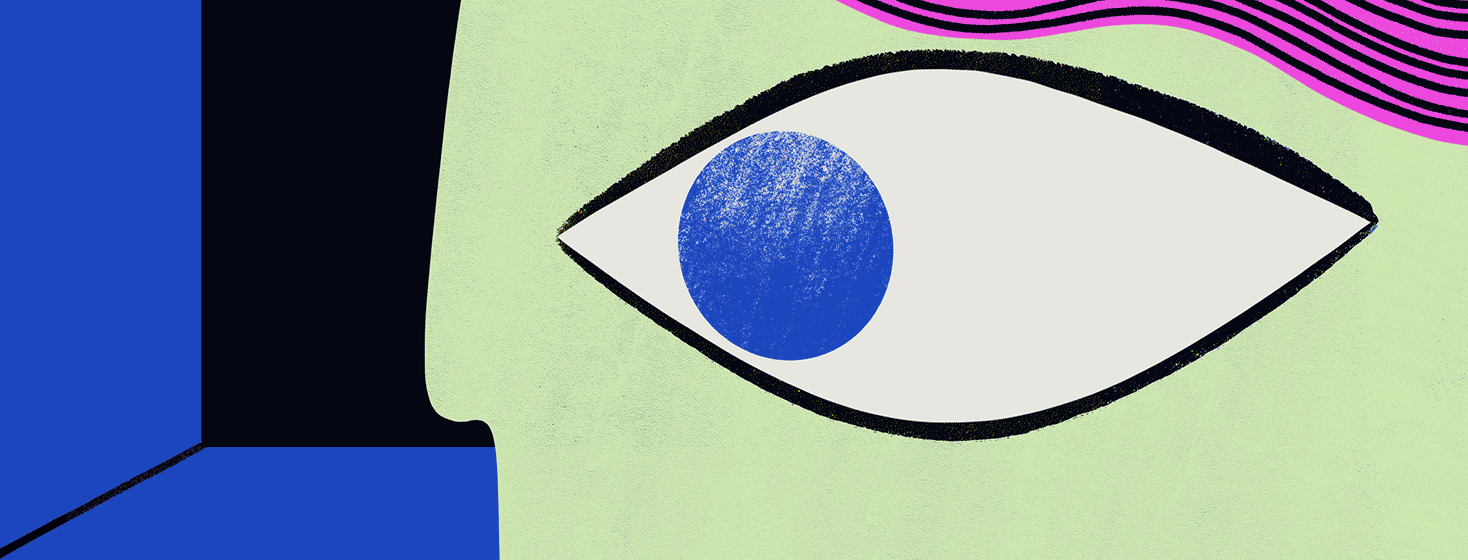The Elephant in the Room: Charles Bonnet Syndrome
If only we'd known about Charles Bonnet Syndrome (CBS) before my mother developed it.
It snuck up on our family quickly and without warning. If we’d known it could be lurking in the shadows, literally and figuratively, we could have been prepared.
But it’s not surprising it caught us unawares. “It’s probably one of the most common eye health conditions that almost no one’s ever heard of,” said Scot Muirden, founder of the Charles Bonnet Syndrome Foundation. On a recent webinar, he described CBS as being “the elephant in the room” in the field of eye health care.1
Experiencing Charles Bonnet Syndrome
And an elephant is about the only thing my mother didn’t see in her room!
She was living in supported residential care, sharing a room with my father. Mum was legally blind with dry macular degeneration. She still enjoyed her life at 95 and loved all the entertainment that was on offer at her care home. Luckily, she was sharp as a tack, remembering their daily and weekly timetables by heart, as she couldn’t read the printed programs.
Then the visions started! Mum reported clothes left all over the bed. Water was on the floor. People were in the bathroom. My father was stressed trying to pick up non-existent clothes and mop up water on the floor which wasn’t there. He also had to somehow get rid of the unwanted people in the bathroom.
We were all scared she’d be moved to the dementia ward. We had no idea what was causing these phantom visions.
The general practitioner wanted to prescribe medication, but the family asked him to hold off. Mum had recently had her eyes checked, so we didn’t think to go back to the ophthalmologist.
It was a daily struggle to convince her that the things she was seeing weren’t real, and it was very distressing for everyone. Especially after COVID-19 started, I knew there weren’t really lots of little children singing and dancing in the corridor, as reported to me on the phone.
Getting the diagnosis
It was a visiting geriatrician who first mentioned the words “Charles Bonnet Syndrome” She gave us a brief explanation of the condition. CBS describes the situation where mentally healthy people who’ve lost their vision experience vivid phantom images. There is now a move to not call them hallucinations because of the mental health connotations.1
It’s no wonder it took a while to get a diagnosis. A Canadian study found that 55% of general practice doctors had never heard of CBS (Gordon et al, 2018).2
An informal 2013 survey undertaken in Sydney, Australia found that less than 1% of GPs knew of the Syndrome.3
Once we knew what was going on, we tried to explain to Mum that it was her brain making up things, because her eyes couldn’t see much detail anymore. I had to find a gentle way to reassure her that she wasn’t “going bonkers.” She was relieved to hear this, but the visions didn’t stop, and they seemed very real to her.
Coping strategies
The geriatrician (and our research) gave us some suggestions to try when the visions came. The idea was to change the environment if possible. If the lights were on, turn them off. It if was quiet, turn on the television or the radio. Move to another room if possible. Look quickly from side to side.
Sometimes these strategies helped, other times they didn’t. And Dad was left to “pick up the clothes and mop the floor” again.
I think Mum’s visions were sometimes related to stress. In the evening she liked to set out her, and my father’s clothes for the next day. They always both looked very smart, and she didn’t like to leave it up to the nurses to select her clothes.
Getting matching clothes ensembles for 2 people down out of the closet when you are legally blind and in a wheelchair is no easy matter.
My father, bless him, was not always aware of the subtleties of color and style coordination. My mother, in response, saw clothes all over her bed in the evening when she was trying to organize the following day's outfits. This seemed to make the task almost unachievable. But, to her credit, she maintained her independence and fashion style right to the end.
Telling her story
The phantom visions (and phantom visitors!) never stopped, but at least we had learned the cause, and a few tricks of our own to deal with them. Hopefully, her experience will mean that someone else will recognize CBS early if it happens to them or a family member. She wanted me to tell this story.

Join the conversation